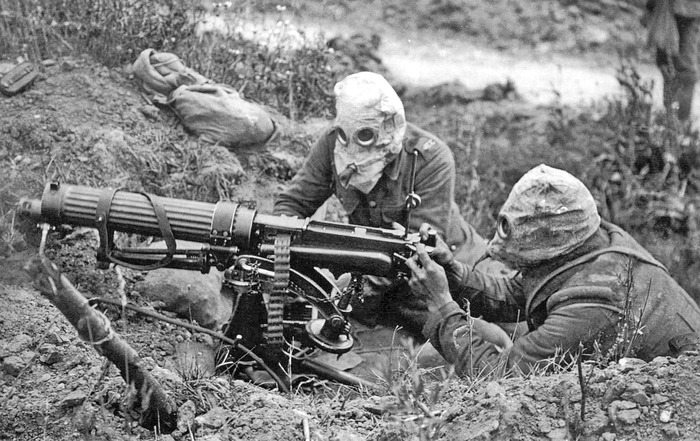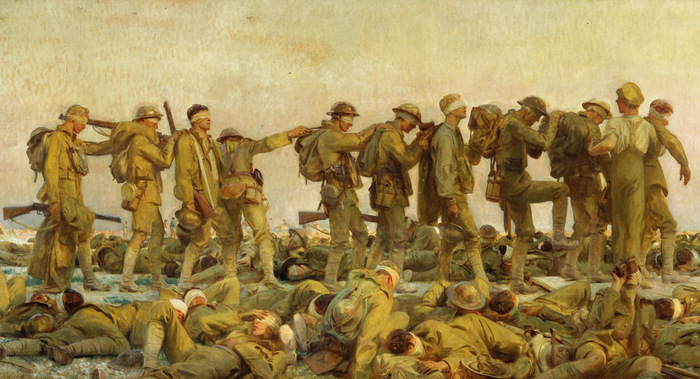How did a weapon of war become a blood cancer treatment?
As we pay tribute to the soldiers of World War I, we look at the surprising link between the battlefields of France and blood cancer research.

British soldiers wearing gas masks in the trenches of WWI
In July 1917, British soldiers in Ypres, Belgium looked out over the trenches. They’d been on the frontlines for weeks. But today something was different. The air had become thick and smelled strongly of garlic. It burned their throats. Slowly it dawned on them – they were under attack.
The call went round – “GAS! GAS! GAS!” – and soldiers scrambled to fit protective masks. They were safe. Or so they thought.
What the soldiers at Ypres didn’t know, was that they’d been exposed for the first time to a new, deadly weapon – mustard gas. Nearly 10,000 soldiers would die that day. But hidden amongst the devastation lay a clue that would spark a revolution in blood cancer treatment.
When doctors examined the bodies of the soldiers exposed to mustard gas, they noted that the chemical had not only blistered their skin, but destroyed the white blood cells of their immune systems. The doctors didn’t realise it, but these soldiers held a vital clue in their blood.
The importance of this wasn’t to be fully understood for 20 years.
It was during World War II that the discovery was made. Fearing a repeat of the devastating gas attacks of World War I, Allied researchers were tasked with finding ways to treat mustard gas. At Yale University two researchers, Louis Goodman and Andrew Gilman, analysed the medical files of soldiers exposed to mustard gas during World War I. They were intrigued by the low levels of white blood cells in their medical records.
And something clicked.

"Gassed" painting by John Singer Sargent
If the gas could kill off healthy cells, it might kill off cancerous cells too. This could have massive implications for treating leukaemia and lymphoma. Both are blood cancers that develop in white blood cells, and both were virtually untreatable at the time.
The birth of chemotherapy
The two scientists set about searching for a volunteer to test their idea, finding a suitable patient known only as J.D. His prognosis was poor. He had a tumour on his jaw, meaning he couldn’t swallow or sleep. He couldn’t move his arms as tumours on his lymph nodes were too large, and he was in constant pain.
In August 1942, doctors administered J.D the first injection of the top secret ‘substance x’. Substance x was in fact nitrogen mustard, the chemical used for producing mustard gas.
Within a few days J.D’s pain decreased. With each injection, his lymph nodes shrank. He gained mobility. He was able to sleep and eat. Recovery of this nature had never been seen before. It was an incredible milestone in the history of cancer treatment – the birth of what we now call chemotherapy.
Sadly, his remission was short-lived and J.D died on December 1st 1942. Like the soldiers before him at Ypres, J.D passed away without knowing the impact his life would mean for future generations. But his death changed things forever, sparking rapid improvements in chemotherapy and cancer treatment.
From destruction comes hope
Chemotherapy has come on a long way since the crude treatment given to J.D in 1942. But it still carries significant side effects and this drives our search for kinder treatments today.
More than 100 years have passed since the soldiers of Ypres laid down their lives on the battlefield – a moment of tragedy which sparked a future of hope. And in a twist of irony, a devastating weapon designed with the cruellest of intentions continues to save many more lives than it has ever taken.

Want to read more stories like this?
Join our mailing list to get stories like this delivered directly to your inbox every month.
